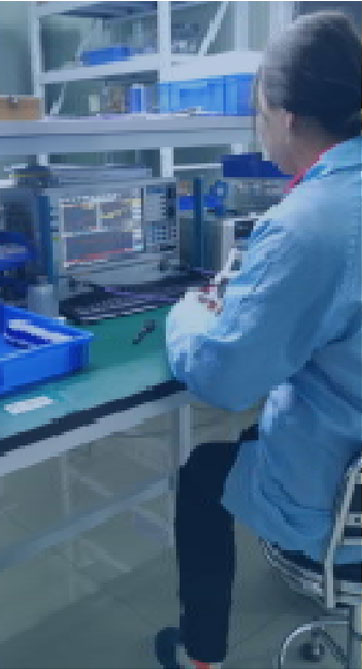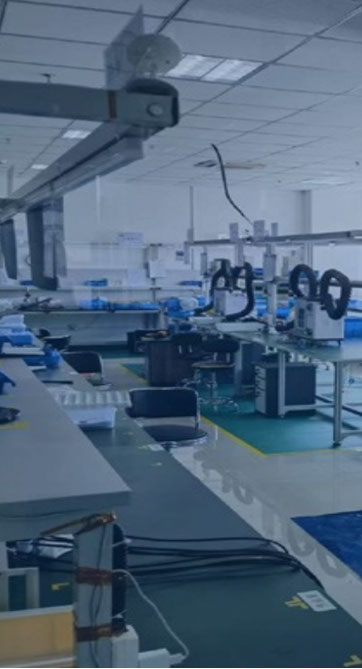
Pin diode technology has risen to prominence as an important building block in high-frequency designs thanks to its native electrical features Their high-speed switching performance and low capacitance along with negligible insertion loss position them well for switch modulator and attenuator implementations. The primary process that governs PIN diode switching is the modulation of current by varying the applied bias. Voltage bias impacts the depletion layer width across the junction and consequently the conduction. Tuning the bias current allows PIN diodes to switch effectively at RF frequencies with reduced distortion
PIN diodes are often used in elaborate circuit arrangements where strict timing and control are essential They can serve in RF filter networks to selectively transmit or block specific frequency ranges. Also their capacity to manage high power signals makes them applicable to amplifiers power dividers and signal generators. Reduced size and improved efficiency of PIN diodes have enhanced their applicability in wireless and radar engineering
Study of Coaxial Switch Performance
Developing coaxial switches is complicated and depends on careful analysis of key parameters Switch performance is influenced by factors like the switch type operating frequency and insertion loss characteristics. Designs should focus on cutting insertion loss and increasing isolation to improve switch performance
Analyzing performance involves measuring important parameters like return loss insertion loss and port isolation. Metrics are assessed using simulation tools theoretical modeling and laboratory measurements. Rigorous performance analysis is necessary to secure dependable coaxial switch operation
- Coaxial switch analysis typically employs simulation tools, analytical techniques and experimental procedures
- The behavior of a coaxial switch can be heavily influenced by temperature impedance mismatch and manufacturing tolerances
- Contemporary advances and emerging developments in coaxial switch engineering seek improved metrics with smaller size and reduced power
LNA Performance Enhancement Techniques
Improving LNA performance efficiency and gain is key to maintaining high signal fidelity across applications That involves meticulous transistor choice biasing arrangements and topology selection. Well engineered LNA circuits reduce noise influence and increase amplification while controlling distortion. Modeling and simulation tools enable assessment of how transistor choices and biasing alter noise performance. Achieving a reduced Noise Figure demonstrates the amplifier’s effectiveness in preserving signal amid internal noise
- Opting for transistors with small inherent noise is a vital design decision
- Establishing proper bias conditions with optimal settings minimizes noise within transistors
- Circuit layout and topology have substantial impact on noise characteristics
Approaches such as matching networks noise suppression and feedback loops help improve LNA behavior
PIN Diode Based RF Switching and Routing

Pin diode based switches enable adaptable and effective RF signal routing in various use cases They can be switched very fast to allow flexible dynamic routing of RF signals. The low insertion loss and high isolation of PIN diodes help maintain signal integrity during switching. Use cases include antenna selection duplexer networks and phased array antennas
Voltage control varies the device resistance and thus controls whether the path is conductive. The deactivated or off state forces a high resistance barrier that blocks RF signals. Forward biasing the diode drops its resistance allowing the RF signal to be conducted
- Furthermore additionally moreover pin diode switches deliver fast switching speeds low power use and compact footprints
Different design configurations and network architectures of PIN diode switches provide flexible routing functions. Linking multiple PIN switches produces dynamic matrices that allow adaptable signal path configurations
Coaxial Microwave Switch Testing and Evaluation

The evaluation assessment and testing of coaxial microwave switches is essential to confirm optimal operation in complex electronic systems. Many factors such as insertion reflection transmission loss isolation switching speed and spectrum range govern switch performance. A comprehensive evaluation process involves measuring these parameters under a variety of operating environmental and test conditions
- Additionally the assessment should examine reliability robustness durability and the ability to endure severe environmental conditions
- Ultimately the conclusions of a detailed evaluation deliver important valuable critical intelligence for choosing designing and refining switches for specific tasks
Extensive Review on Minimizing Noise in LNA Designs
Low noise amplifier circuits are central to RF systems for enhancing weak signals and limiting internal noise. This review gives a broad examination analysis and overview of methods to lower noise in LNAs. We examine investigate and discuss the fundamental noise sources including thermal shot and flicker noise. We further consider noise matching feedback solutions and biasing best practices to lessen noise. The review emphasizes recent innovations including novel materials and architecture approaches that decrease noise figures. Through detailed coverage of noise reduction principles and techniques the article aids researchers and engineers in crafting high performance RF systems
High Speed Switching Applications for PIN Diodes

They possess unique remarkable and exceptional qualities beneficial for high speed switching Their small capacitance and low resistance facilitate high speed switching suitable for accurate timing control. Also PIN diodes respond proportionally to voltage which allows controlled amplitude modulation and switching actions. Their adaptability flexibility and versatility qualifies them as suitable applicable and appropriate for broad high speed uses They find use in optical communications microwave circuitries and signal processing devices and equipment
IC Coaxial Switch and Circuit Switching Advances
Integrated circuit coaxial switching technology brings enhanced capabilities for signal routing processing and handling within electronics systems circuits and devices. These specialty ICs are engineered to control manage and direct signal flow through coaxial cables offering high frequency performance and low latency propagation insertion times. The miniaturized nature of IC technology produces compact efficient reliable and robust designs suitable for dense interfacing integration and connectivity demands
- With careful meticulous and rigorous deployment of these approaches developers can accomplish LNAs with outstanding noise performance enabling trustworthy sensitive electronics Through careful meticulous and rigorous application of such methods engineers can design LNAs with top tier noise performance enabling dependable sensitive systems By rigorously meticulously and carefully implementing these techniques practitioners can achieve LNAs with remarkable noise performance for sensitive reliable electronics Through careful meticulous and rigorous application of such methods engineers can design LNAs with top tier noise performance enabling dependable sensitive systems
- Applications of IC coaxial switch technology span telecommunications data communications and wireless networks
- Aerospace defense and industrial automation benefit from integrated coaxial switch solutions
- Consumer electronics audio video equipment and test measurement instruments utilize IC coaxial switching
mmWave LNA Design Considerations and Tradeoffs

At mmWave frequencies LNAs must contend with greater signal attenuation and intensified influence from noise sources. Parasitic elements such as capacitance and inductance dominate performance at mmWave so layout and component selection are critical. Minimizing mismatch while maximizing gain is critical essential and important for mmWave LNA operation. Choosing appropriate active devices like HEMTs GaAs MESFETs or InP HBTs is key to achieving low noise at mmWave bands. Additionally furthermore moreover careful design implementation and optimization of matching networks is vital for efficient power transfer and impedance matching. Package parasitics must be managed carefully as they can degrade mmWave LNA behavior. Implementing low-loss transmission lines along with proper ground plane design is essential necessary and important for reducing reflection and ensuring bandwidth
coaxial switchModeling Strategies for PIN Diode RF Switching
PIN diodes are vital components elements and parts used throughout numerous RF switching applications. Precise accurate and detailed characterization of such devices is essential for designing developing and optimizing reliable high performance circuits. This includes analyzing evaluating and examining their electrical voltage and current characteristics like resistance impedance and conductance. Frequency response bandwidth tuning capabilities and switching speed latency or response time are also characterized
Furthermore moreover additionally accurate model and simulation development for PIN diodes is vital essential and crucial for behavior prediction in RF systems. Different modeling methods like lumped element distributed element and SPICE models exist. Which model simulation or representation to use depends on the particular application requirements and the expected required desired accuracy
Cutting Edge Methods for Low Noise Amplifier Design
Designing LNAs is a crucial task requiring careful attention to circuit topology and component selection to reach optimal noise performance. Recent advances in semiconductor tech have unlocked innovative groundbreaking sophisticated LNA design techniques that diminish noise greatly.
Among the techniques are utilizing implementing and employing wideband matching networks integrating low noise high intrinsic gain transistors and refining biasing schemes strategies and approaches. Furthermore advanced packaging and thermal control strategies play an essential role in lowering external noise contributions. With careful meticulous and rigorous execution of these strategies designers can obtain LNAs exhibiting excellent noise performance for sensitive reliable systems
